Google Search Console (GSC) is a powerful, free tool offered by Google, designed to help website owners, SEO professionals, and marketers understand how their site performs in Google Search. With GSC, users gain valuable insights into website visibility, monitor search traffic, identify indexing issues, and troubleshoot common SEO problems that might impact search rankings. As search engines grow increasingly complex, having direct access to Google’s perspective on your site is essential for maintaining and improving its online presence.
In this guide on Google Search Console basics, we’ll walk you through the essentials of setting up GSC, navigating its key features, and leveraging its data to enhance your SEO strategy. For more on SEO, you might also explore our guides on SEO Optimization Tools, Search Intent, and SEO Audits. By understanding how to use GSC for SEO, you’ll be able to make informed adjustments that can drive more traffic, improve user experience, and align your website more closely with search intent.
Whether you’re a beginner learning how to navigate GSC or an SEO enthusiast aiming to improve site performance, this comprehensive overview will serve as your go-to resource for optimizing your site’s presence in Google Search results.
What is Google Search Console?
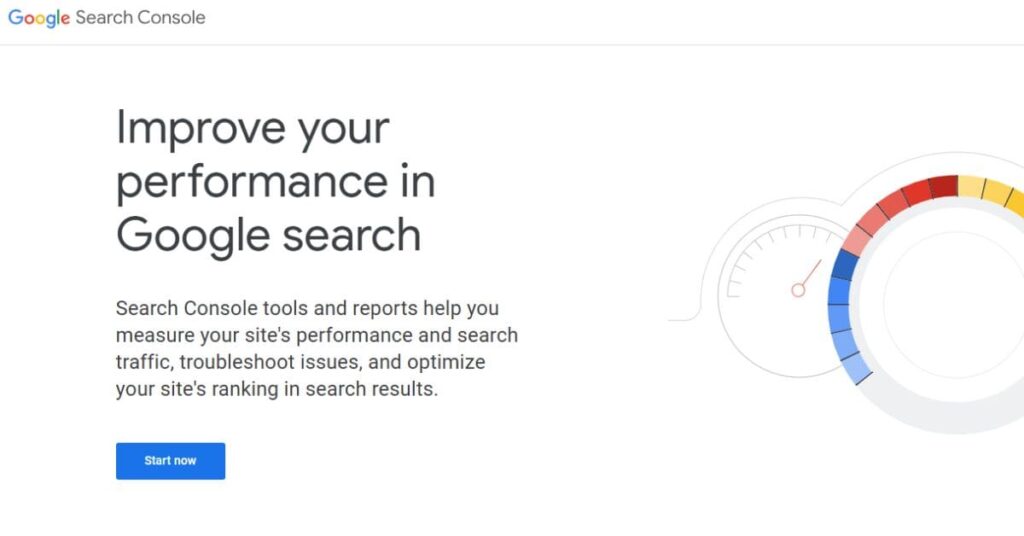
Google Search Console (GSC) is a free tool provided by Google, designed to help website owners, SEO professionals, and marketers monitor and maintain their site’s performance in Google Search. At its core, GSC enables users to track crucial aspects of search visibility, identify indexing issues, and optimize for search performance—making it an essential Google SEO tool for anyone aiming to increase organic traffic and site visibility.
While GSC and Google Analytics both offer valuable insights, they serve distinct purposes. Google Analytics provides data on user behavior, like pageviews and time spent on the site, which is useful for analyzing visitor engagement. In contrast, Google Search Console focuses on search performance monitoring, offering unique insights into how Google views your site, including search queries that drive traffic, the number of clicks and impressions in search results, and average ranking position. GSC features are particularly helpful for diagnosing SEO issues and improving site visibility in Google Search results, making it an indispensable tool for a well-rounded SEO strategy.
For those new to GSC features, this guide will help you leverage Google Search Console basics to strengthen your website’s presence on the search engine.
Setting Up Google Search Console

Navigating the Google Search Console Dashboard
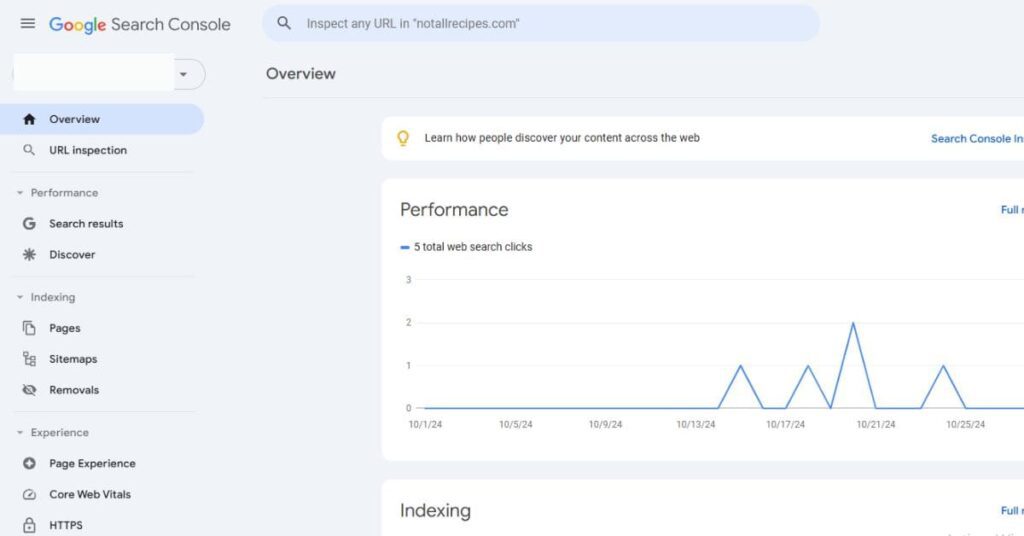
The Google Search Console (GSC) dashboard is designed to give website owners a clear overview of their site’s search performance and identify areas needing attention. Upon logging in, users are greeted with a dashboard that organizes GSC features into key sections, making it easy to understand GSC insights.
- Performance: This tab provides data on search traffic, including clicks, impressions, CTR (click-through rate), and average position for search queries. The Performance report is invaluable for tracking which keywords and pages drive traffic to your site. Learn more in our guide on SEO Optimization Tools.
- URL Inspection: With this tool, users can check the index status of specific pages and troubleshoot indexing issues. It’s useful for understanding if Google can crawl and index your pages correctly. Explore our article on conducting an SEO audit to understand more about indexing.
- Indexing: This section shows how many pages Google has indexed and flags issues that may prevent pages from appearing in search results. The Coverage report within Indexing helps identify pages with errors or warnings. For an in-depth look, check out our guide on search engines.
- Experience: Here, GSC provides insights into Core Web Vitals, mobile usability, and other factors affecting user experience on your site. For more on improving user experience, see On-Page SEO Techniques.
- Links: This tab offers data on internal and external links, including which pages receive the most links and the top linking sites. Learn about link-building strategies in our article on Local SEO.
By understanding the GSC dashboard, you’ll be equipped to use Google Search Console features effectively, ensuring your site performs optimally in search results.
Performance Reports in Google Search Console
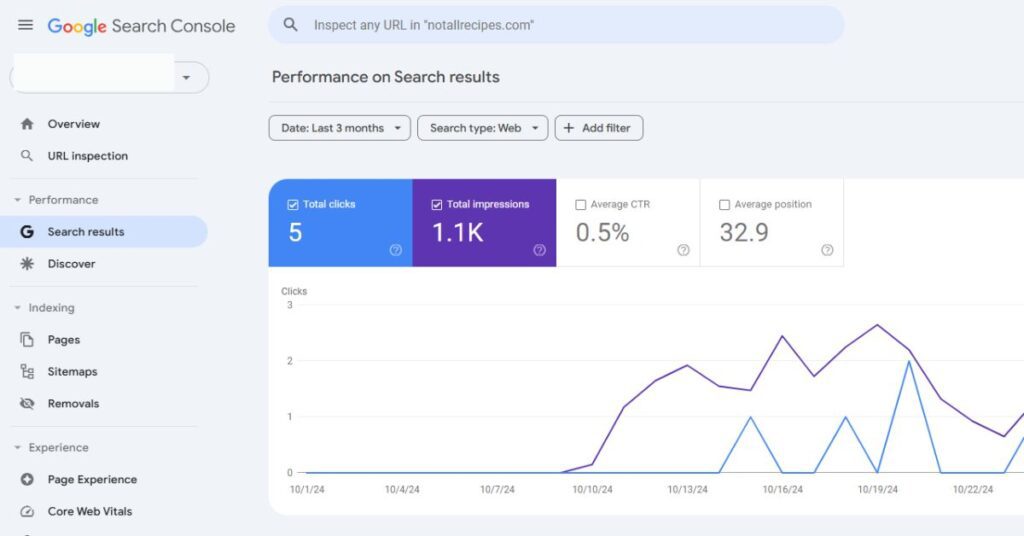
The Performance Reports in Google Search Console (GSC) offer a wealth of insights for analyzing how your website performs in Google Search. By examining key metrics like impressions, clicks, CTR, and average position, users can make data-driven decisions to improve their SEO strategy. Understanding and utilizing these reports is essential for increasing your site’s visibility and engagement with target audiences.
Key Metrics in GSC Performance Reports
- Impressions: This metric reflects how often your website’s URLs appear in search results. Each time a page from your site is shown for a query, it counts as one impression. Monitoring impressions can help gauge how well your content aligns with search demand and track changes in visibility over time.
- Clicks: Clicks show the number of times users clicked on your URLs from search results. By analyzing GSC clicks and impressions, you can determine which pages and queries are most successful at attracting traffic and identify where there’s potential to draw in more visitors.
- CTR (Click-Through Rate): CTR is the percentage of impressions that resulted in a click. A high CTR means users are finding your content relevant to their queries. Improving your CTR, for instance, by enhancing meta descriptions and title tags to make them more compelling, can significantly impact your site’s traffic. On-Page SEO Techniques are one approach to optimizing CTR.
- Average Position: This metric shows the average ranking of your URLs in search results. A higher average position (closer to position 1) usually correlates with increased traffic, as users tend to click on results near the top of the page. To improve your average position, consider revisiting search intent and aligning your content to meet the needs of your target audience. Check out Search Intent for more tips on aligning content with user queries.
Search Queries and Pages in GSC
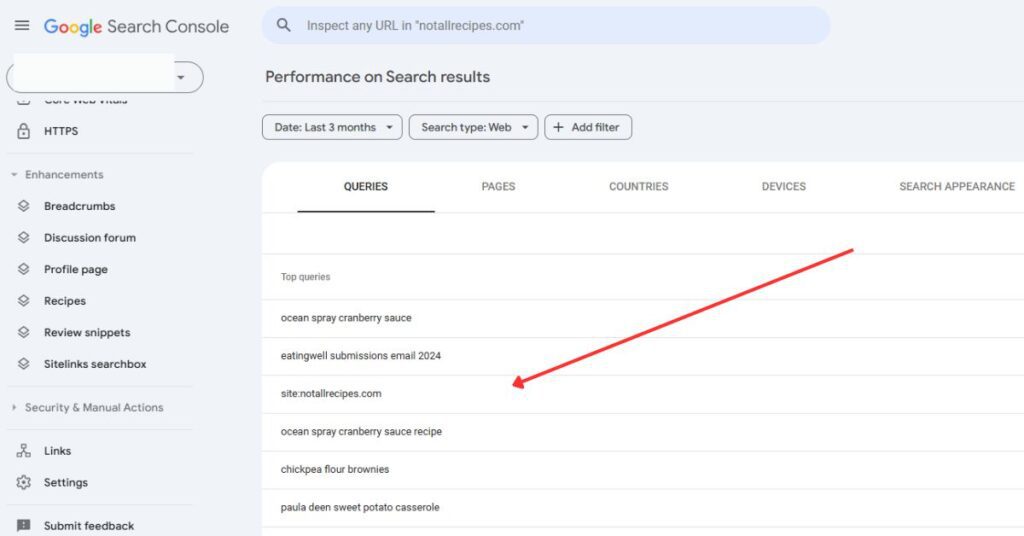
GSC search query analysis allows you to identify which search terms are driving traffic to your site. By filtering data in the Performance Report, you can analyze traffic by queries, pages, countries, and even devices. Knowing which queries lead to clicks enables you to identify valuable keywords, which can be used to improve existing content or guide new content creation. For instance, if a particular query drives substantial traffic, you might consider expanding on that topic across multiple pages or creating supplementary content to boost engagement.
Filtering by pages is also insightful for determining which of your URLs rank well and generate the most traffic. If you’re focusing on a specific geographic region, filtering by country can show how well your content resonates with that audience.
By analyzing the GSC performance report, you’ll gain a clearer view of how users find your site through Google Search, the effectiveness of your SEO efforts, and actionable areas for improvement. For those interested in diving deeper into search engine optimization, explore our post on SEO Optimization Tools to enhance your overall strategy.
Indexing and Coverage Reports in Google Search Console
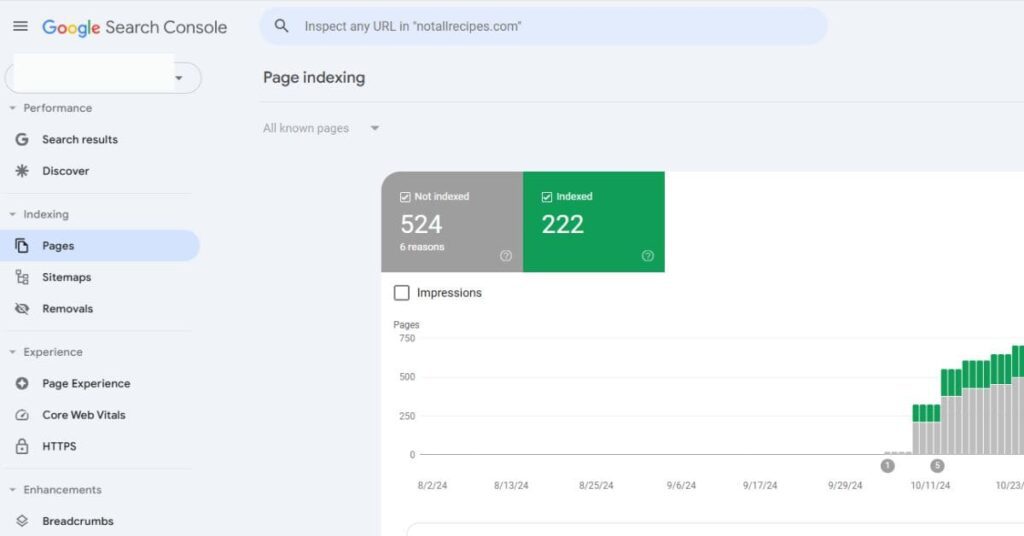
The Coverage Report in Google Search Console (GSC) provides a detailed view of which pages on your site are indexed by Google and which face issues that prevent them from appearing in search results. For any site aiming to improve its visibility, understanding Google Search Console indexing and resolving coverage report errors is crucial to ensure that all valuable pages are available to users.
Coverage Report Overview
The Coverage Report categorizes URLs into four main sections:
- Errors: Pages in this section have critical issues that prevent them from being indexed, such as server errors, missing pages, or issues with redirects. Addressing these errors promptly is essential, as unresolved errors mean the affected pages won’t appear in search results.
- Valid with Warnings: These pages are indexed but may have issues that could impact their performance, like being indexed despite being marked “noindex” or having minor usability issues. Monitoring these can help prevent further complications down the road.
- Valid: Pages in this section are correctly indexed and have no issues detected. These are the pages Google successfully crawls, so ideally, most of your URLs should be in this category.
- Excluded: Pages that Google intentionally skips over, often due to factors like duplicate content, redirects, or manual “noindex” tags.
Using the URL Inspection Tool
For more precise analysis, the URL Inspection Tool allows users to inspect specific URLs to understand their indexability status and resolve individual issues. The tool provides details on whether a URL is indexed, any crawl errors it encountered, and suggestions for improving indexability. If a page isn’t indexed, you can request indexing directly from the tool after fixing the issue, making it easier to bring important pages back into Google’s index.
By staying on top of Google Search Console indexing and proactively managing coverage report issues, you can improve your site’s visibility and ensure a smooth user experience across indexed pages. For further insights on related topics, explore our guide on How to Conduct an SEO Audit to ensure your site meets best practices across all aspects of SEO.
Enhancements and Experience Reports in Google Search Console
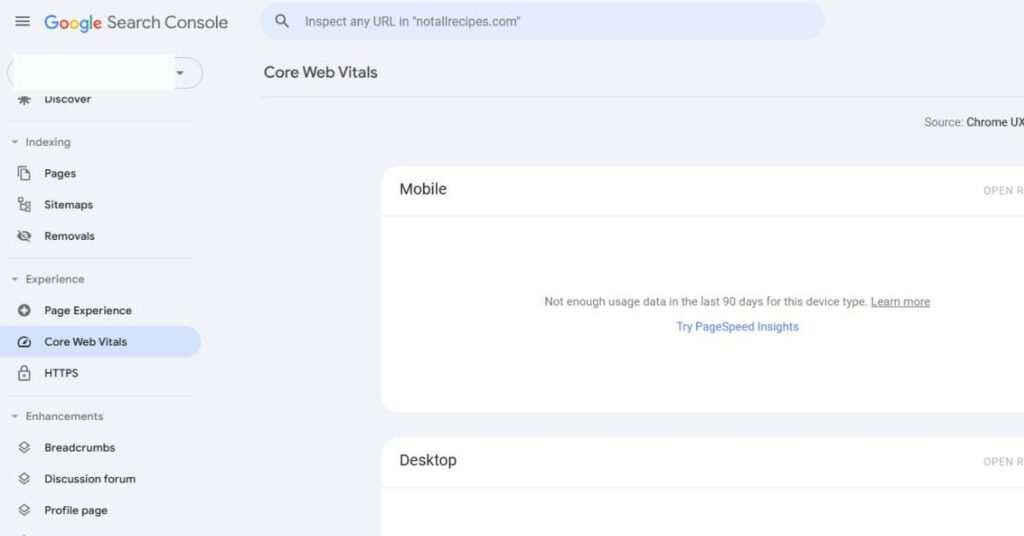
The Enhancements and Experience Reports in Google Search Console (GSC) focus on the quality of user experience on your site, providing crucial insights into performance metrics that affect how visitors interact with your content.
Core Web Vitals
One of the key features in this section is the Core Web Vitals (CWV) report, which measures essential aspects of user experience through three primary metrics:
- LCP (Largest Contentful Paint): This measures loading performance, specifically the time it takes for the largest element on the page to load. An optimal LCP score is under 2.5 seconds.
- FID (First Input Delay): This metric assesses interactivity by measuring the time from when a user first interacts with your site to when the browser responds. A good FID score is under 100 milliseconds.
- CLS (Cumulative Layout Shift): This metric evaluates visual stability, calculating how much the content shifts during loading. A CLS score below 0.1 is considered good.
Mobile Usability
The Mobile Usability report helps you identify mobile usability issues that could hinder the experience of users accessing your site on mobile devices. Common issues include text that is too small, touch elements that are too close together, and content that is wider than the screen.
Security & Manual Actions
Finally, the Security & Manual Actions section alerts you to potential threats such as malware or hacks, as well as any manual penalties imposed by Google. Being proactive in addressing these issues is essential to maintaining your site’s integrity and ranking.
By utilizing these reports, you can enhance user experience and ensure your site meets the standards required for optimal performance. For more tips on improving your site’s overall SEO, check out our post on SEO Optimization Tools.
Link Reports in Google Search Console
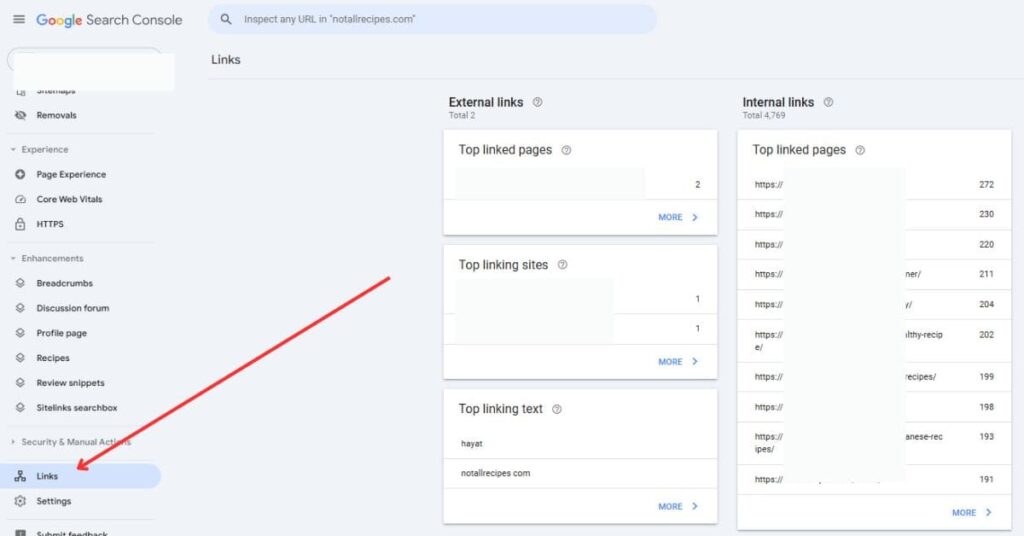
The Link Reports section in Google Search Console (GSC) is a valuable resource for analyzing both internal and external links, providing insights that are crucial for enhancing your site’s SEO strategy and overall visibility.
Internal Links
Internal links play a significant role in SEO by helping search engines understand your site’s structure and hierarchy. They improve user navigation, making it easier for visitors to find related content. A well-structured internal linking strategy not only aids in distributing page authority across your site but also enhances user engagement by guiding visitors to additional relevant information. Using GSC to analyze your internal links can help you identify which pages need more links or which pages are not receiving enough attention.
External Links
In addition to internal links, GSC allows you to monitor external links (backlinks) pointing to your site. This is vital for assessing your link-building strategy and understanding how your site is perceived by others on the web. You can check referring domains, the number of backlinks, and the context in which they are used to ensure they align with your site’s content and goals.
Top Linking Sites and Text
The report also details top linking sites and the anchor text used to link to your pages. Understanding which sites link to your content and the specific text used provides insight into how others perceive your content and can inform your future outreach efforts. This analysis is key for effective GSC backlink analysis, enabling you to identify strong backlinks that boost your site’s authority and potential opportunities for new partnerships.
By leveraging the insights from GSC’s Link Reports, you can enhance your SEO strategy, improve user experience, and ultimately drive more organic traffic to your website. For further tips on enhancing your SEO, explore our guide on Creating SEO Performance Reports.
Utilizing GSC for SEO Improvements
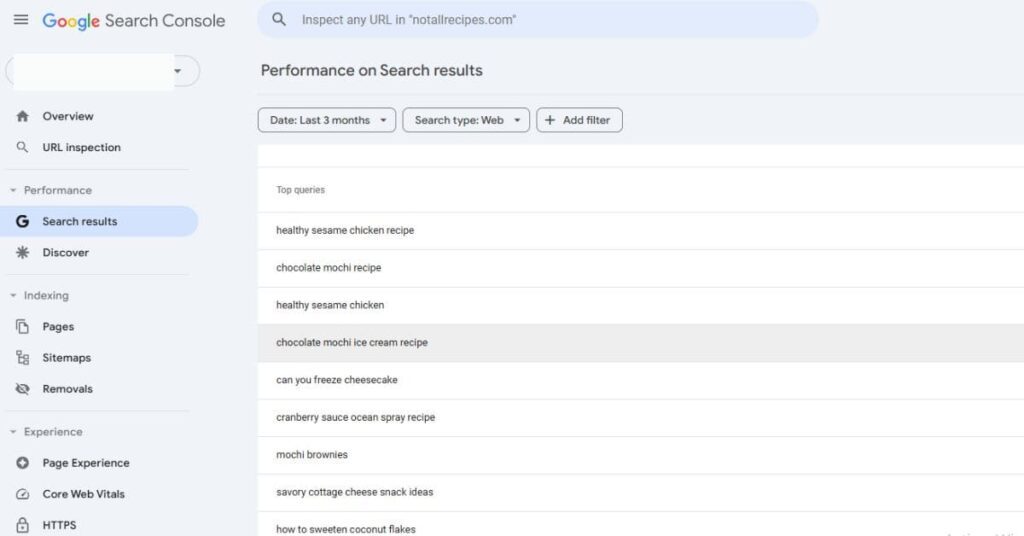
Google Search Console (GSC) is an indispensable tool for enhancing your website’s SEO performance. By effectively leveraging the insights provided by GSC, you can implement significant improvements that lead to increased visibility and traffic.
Tracking Keyword Performance
One of the primary benefits of using GSC for SEO improvement is the ability to track keyword performance. By analyzing high-performing search queries, you can identify content that resonates with your audience. Adjusting and optimizing this content to target similar keywords can further enhance its visibility. Consider creating additional resources or blog posts around these queries to capture even more traffic.
Diagnosing SEO Issues
GSC is also instrumental in diagnosing SEO issues. The Coverage Report highlights problems like broken pages, non-indexed URLs, and Core Web Vitals (CWV) issues that could hinder your site’s performance. By addressing these issues promptly, you ensure that all your valuable content is accessible to users and search engines alike.
Improving CTR and Positioning
Improving click-through rate (CTR) and average positioning can be achieved through various strategies. Use GSC data to optimize your metadata, including title tags and meta descriptions, making them more compelling and relevant to user queries. Additionally, enhancing the overall user experience by improving page load speed and mobile usability can also lead to better positioning in search results.
By actively engaging with GSC and implementing the insights gained, you can effectively fix SEO issues with GSC and continually optimize your content strategy. For more techniques on boosting your SEO efforts, check out our article on AI in Search Engines.
Common Google Search Console Errors & Solutions
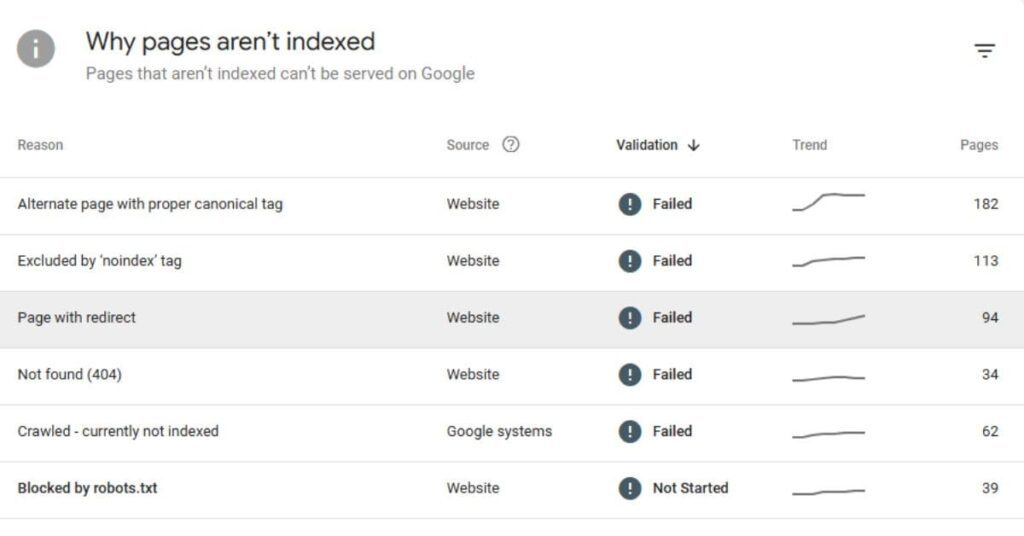
Navigating Google Search Console (GSC) can sometimes lead to encountering various errors that may affect your website’s performance in search results. Understanding these errors and how to address them is crucial for maintaining a healthy site. Here are some common issues and their solutions.
Coverage Errors
- Submitted URL not found (404): This error occurs when a URL submitted in your sitemap cannot be found by Google. To fix this issue, check if the URL is correct and accessible. If the page has been removed intentionally, consider redirecting the URL to a relevant page using a 301 redirect to retain any link equity. If the URL should exist, ensure that it’s published and not blocked by your robots.txt file.
- Crawled – currently not indexed: This status indicates that Google has crawled the page but has chosen not to index it. Reasons can vary from low-quality content to duplicate content. To address this, improve the content quality, ensure it meets user intent, and check for duplicate content issues. Once optimized, use the URL Inspection Tool in GSC to request indexing.
Core Web Vitals Issues
Common Core Web Vitals issues like LCP (Largest Contentful Paint), FID (First Input Delay), and CLS (Cumulative Layout Shift) can negatively impact user experience. For LCP improvements, optimize images and server response times. To address FID, reduce JavaScript execution time, and for CLS, ensure elements have reserved space during loading. Regular monitoring of these metrics in GSC is essential for ongoing optimization.
Manual Actions and Security Warnings
If Google flags your site for manual actions or security warnings, it’s crucial to address these promptly. Manual actions usually stem from violations of Google’s webmaster guidelines. To resolve them, identify the issues outlined in GSC, rectify them, and then submit a reconsideration request to Google. For security warnings, take immediate action to remove malware, secure your site, and submit a security review through GSC.
By understanding these common Google Search Console errors and implementing the suggested solutions, you can effectively fix GSC issues and enhance your site’s performance. For additional guidance on troubleshooting, explore our guide on How to Analyze Website Traffic.
Conclusion & Key Takeaways
In conclusion, Google Search Console (GSC) is an invaluable tool for anyone serious about optimizing their website’s SEO and monitoring site performance. By providing insights into keyword performance, indexing status, and user experience metrics like Core Web Vitals, GSC empowers website owners to make data-driven decisions that enhance search visibility. Regularly using GSC helps identify issues promptly, allowing for timely resolutions that improve overall site health and user satisfaction.
To maximize the benefits of GSC, make it a habit to check your reports frequently, analyze the data, and implement necessary changes. This proactive approach can significantly impact your website’s performance in search results, leading to increased traffic and engagement.
For more in-depth SEO tips and insights, we invite you to explore Digiti Growth. Join us on this journey to elevate your digital presence and harness the full potential of SEO!

